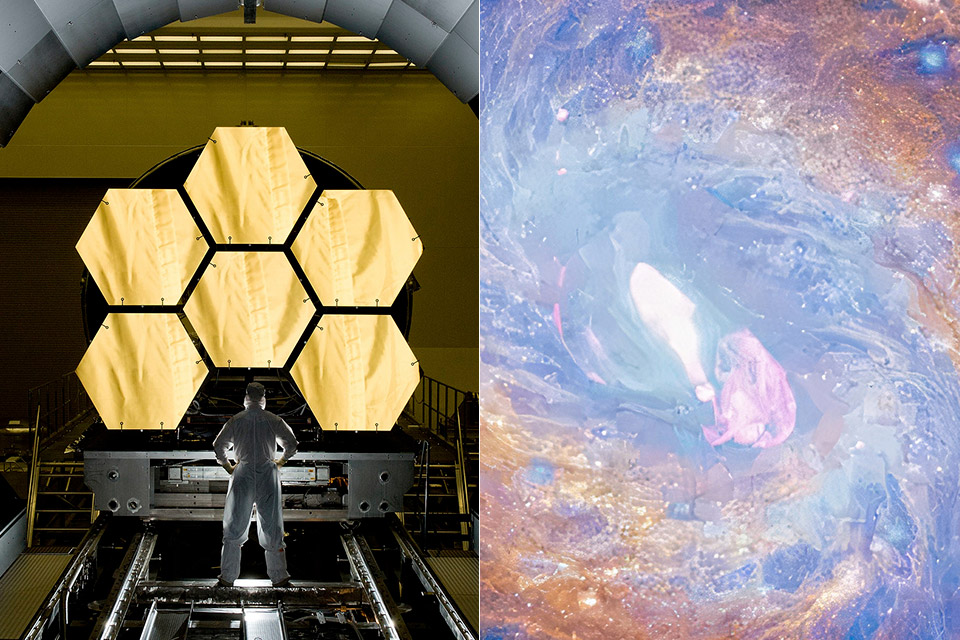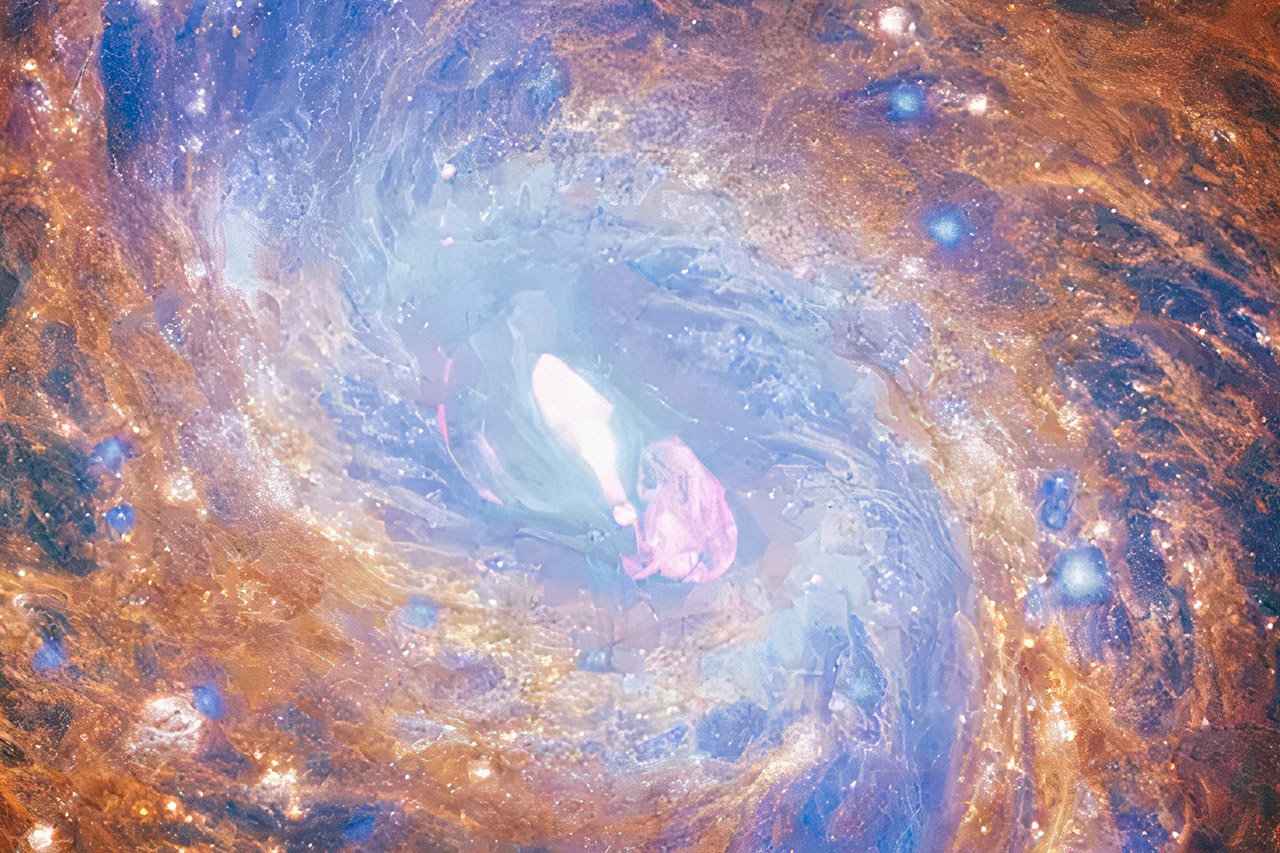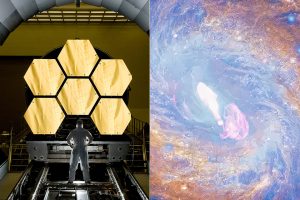NGC 1068’s Glowing Core Comes Alive in New Chandra, Hubble and Webb Composite


For years, astronomers have recognized NGC 1068 as a prime example of a spiral galaxy with a secret engine at its core. This barred spiral, located in the constellation Cetus, is roughly 50 million light-years away and measures 100,000 light-years across. Its arms curve out from a bright center bar. A supermassive black hole resides in the core, weighing around 4 million solar masses, or twice the mass of our own Milky Way. That black hole isn’t quiet, as it powers an active galactic core that emits radiation in all directions.

The latest view, made from three of NASA’s top telescopes, peels back the layers to show the raw drama. Released just a few months ago, this composite combines sharp X-ray details from Chandra, crisp optical images from Hubble, deep infrared from Webb and radio from the Very Large Array. What you see is a galaxy in the midst of cosmic turmoil where a fierce wind is reshaping everything it touches.
Sale

Telescope for Adults & Kids, 70mm Aperture Refractor (15X-150X) Portable Travel Telescope with Phone…
- 【Great Telescope for Kids& Beginners!】 The telescope meets all the needs of astronomy beginners, the adults & kids’ astronomical journey begins…
- 【70mm Large Aperture】The telescope equipped with 70mm aperture and 300mm focal length, which provide more lights and clearer images, even…
- 【Wireless Control】This telescope set includes one phone adapter and one Wireless camera remote. Just install your mobile phone on the phone…
Blue streaks radiate from the center of the image, like electric veins. Those are fresh from Chandra’s X-ray eyes which are calibrated to see the hottest and most violent things in the universe. The observatory detects emission from gas heated to millions of degrees and blown out by the black hole’s pull and push. Imagine particles moving at a million miles per hour—fast enough to go around the Earth four times in a minute. This outflow collides with the surrounding gas clouds, compressing them and causing more X-ray bursts. Chandra’s contribution does more than just show the black hole’s fury; it also maps the edges where that energy meets the galaxy’s material, carving out cavities and creating ripples that resonate throughout the core. Without these high-energy signals the nucleus would be buried behind cooler layers but it stands out here and reminds us that black holes don’t just sit there; they shape their surroundings.

Pink threads begin to develop in the radio signals, giving a smoother contrast that suggests a calmer side to the turmoil. The Very Large Array detected these waves, which illustrate how charged particles are squirting out all over the place near the nucleus; it’s all about synchrotron radiation in magnetic fields. These emissions follow the paths of outflows & jets that go way beyond what we can see, kinda like a faint echo of what happens when a black hole blows it’s top. The pink in the composite begins to merge in with the blues, outlining all of these extremely lengthy structures that span thousands of light years. This shows that the black hole’s wind does not end at the center, but continues to have an impact on the galaxy’s disk. Radio telescopes are particularly good at capturing the large picture of these low-energy events, when the black hole’s influence can still be seen despite the high heat. Putting it all together with the sharper features of space gives you a sense of scale, transforming a single point of violent energy into a much larger picture of what’s going on.
Hubble’s optical lens and Webb’s infrared vision work together to produce the yellows, grays, and golds seen in the galaxy’s furthest reaches. Hubble just captures the ambient light from stars and gas, displaying the spiral arms in warm colors that highlight the young, bright stars that explode off like fireworks at the boundaries. Those arms snake their way around the bar, creating small nooks where fresh star nurseries are sprouting amidst all the dusty pathways. Webb then goes one step further, cutting through the dust to show some of the warmer regions being heated by the black hole’s influence from afar. The infrared bits then allow us to see beneath the dust, revealing secret pockets of material such as all these light filaments around the center where the wind has gone crazy on the molecular clouds. The two telescopes work well together to represent the galaxy’s face in earthy tones, with gold for the brightest star clusters, gray for the shadowed dust lanes, and yellow for all the transitional zones where dust absorbs and then re-emits light. That combination explains how the galaxy’s center distributes this energy outward, helping to generate stars while also threatening to shut it off.
NGC 1068’s Glowing Core Comes Alive in New Chandra, Hubble and Webb Composite
#NGC #1068s #Glowing #Core #Alive #Chandra #Hubble #Webb #Composite








